New Data Show Economic Activity of the U.S. Arts & Cultural Sector in 2021
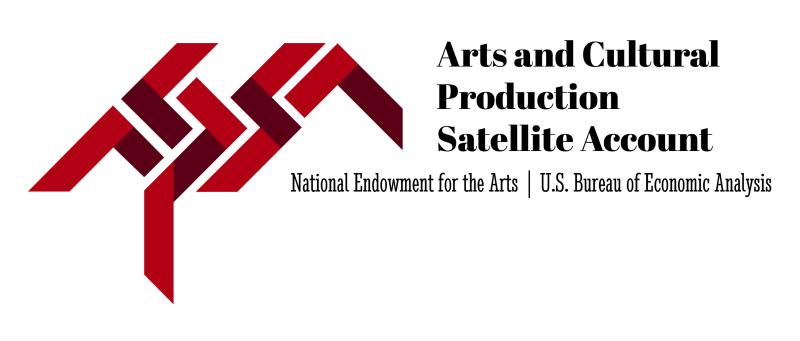
Washington, DC— The National Endowment for the Arts (NEA) and the Bureau of Economic Analysis (BEA) released data today that demonstrate the significant contribution of the arts and cultural industries to U.S. GDP in 2021 while also capturing the continued impact of the pandemic on the sector. The Arts and Cultural Production Satellite Account (ACPSA) tracks the annual economic value of arts and cultural production from 35 industries—including both commercial and nonprofit entities. The 2021 data pinpoint the national and state-level contributions of the arts and cultural sector to the nation’s economy after the first year of COVID-19.
Analysis shows that while the total economic value added by arts and cultural industries grew by 13.7 percent from 2020-2021, several core arts industries did not return to pre-pandemic production levels. This group includes independent artists (as an industry), performing arts organizations (e.g., theater, dance, and opera companies, music groups; and circuses), and arts-related construction, among many others. Despite setbacks for those industries, the overall arts economy in 2021 represented 4.4 percent of GDP, or just over $1.0 trillion—a new high-water mark.
Additionally, in 2021, just under 4.9 million workers were employed to produce arts and cultural goods and services, which is less than the 2019 (pre-pandemic) level of 5.2 million but more than the 2020 level of 4.6 million workers.
“This annual report from the NEA and BEA underscores that arts and culture are an essential part of the American economy. It is similarly apparent, however, that the sector still faces tremendous hardships due to COVID-19,” said NEA Chair Maria Rosario Jackson, PhD. “Because the data reflect the economic activity of nonprofit and for-profit organizations alike, it’s important to recognize the distinctive contributions both make in ensuring a vibrant and expansive arts and cultural sector.”
A national summary report and an accompanying interactive graphic are available on arts.gov. In addition, the NEA has developed a state-level summary report outlining the value added by arts and cultural industries to states’ economies, as well as an interactive map with state-level estimates of arts and cultural value-added, employment, and compensation figures derived from the ACPSA.
For additional state-level resources, BEA has produced ACPSA fact sheets for each state, and, in partnership with the NEA, the National Assembly of State Arts Agencies has created an interactive dashboard by state.
Highlights from the National Report—Arts and Cultural Economic Activity
Between 2020 and 2021, the total economic value added by arts and cultural industries grew by 13.7 percent. This surpasses the increase of the total U.S. economy, which grew by 5.9 percent in the same period.
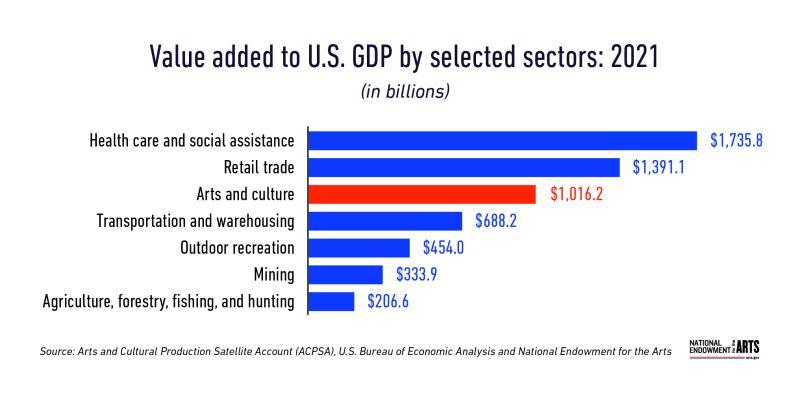
In terms of economic activity, 22 of the 35 arts industries returned to or exceeded pre-pandemic levels. Web publishing and streaming services, for the first time, is the largest arts and cultural industry in the U.S.; it grew by 27.3 percent from 2020 to 2021, for a total economic contribution of $171.3 billion (adjusted for inflation). Composed largely of for-profit establishments, it was also the only arts industry to experience significant growth in 2020. (According to 2020 data from the U.S. Census Bureau’s County Business Patterns, only 18 percent of establishments in this industry are nonprofit.) The industry includes internet publishing and broadcasting, music archives, film archives, comic syndicates, and news photo distribution services.
Other industries that saw growth from 2019 and 2020 included traditional and software publishing, arts retail, creative advertising, specialized design services, and non-government-run museums.
The motion picture industry returned to the pre-pandemic (2019) level—it contributed nearly $68.9 billion in 2021, after a 14 percent dip in 2020. Performing arts presenters (such as performing arts venues and festivals) contributed just over $14.3 billion to the economy (a 122 percent rise from 2020), bringing the industry slightly over the 2019 level.
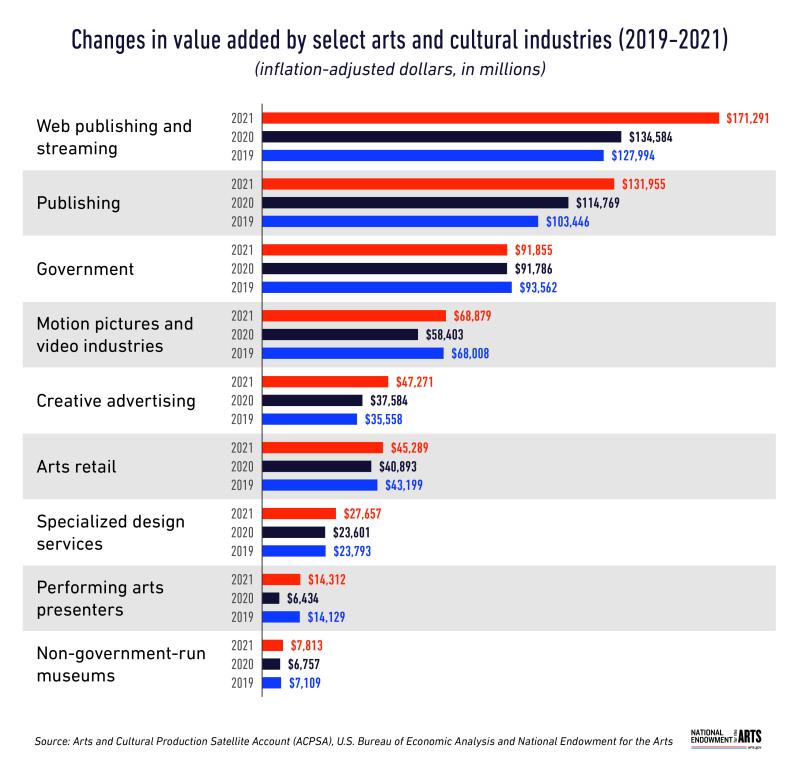
Ten industries saw gains in 2021 but have not returned to 2019 levels. This group includes independent writers, artists, and performers; performing arts organizations; theatrical ticket agencies; musical instrument manufacturers and fine arts education (excluding public schools).
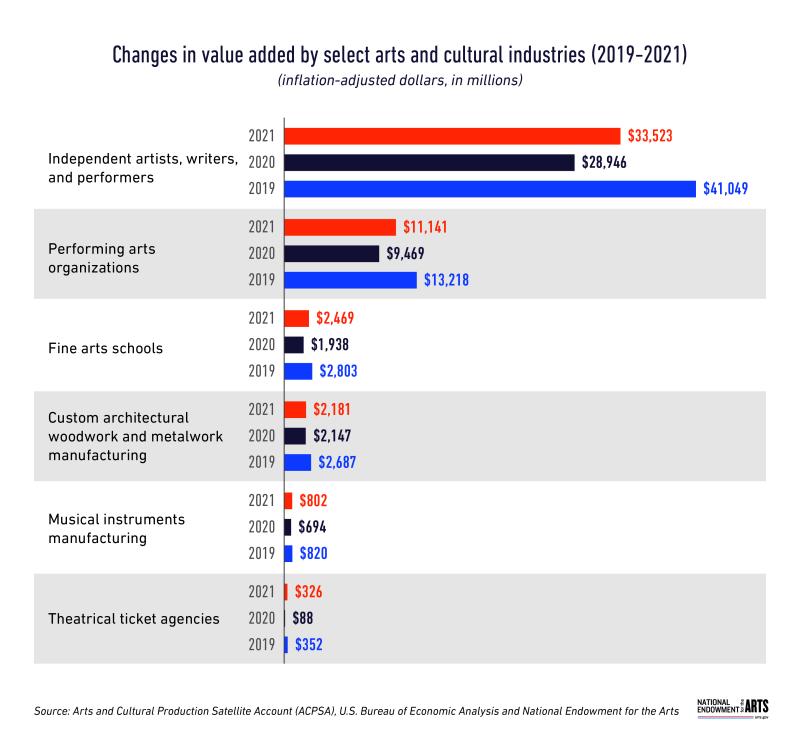
Two industries that saw persistent declines from 2019 through 2021 are arts-related construction, such as the construction and renovation of libraries, museums, and other cultural facilities; and philanthropic services, which includes grantmaking and giving.
Highlights from the National Report—Arts and Cultural Employment
ACPSA also tracks employment in arts and cultural industries. In 2021, just under 4.9 million workers were employed to produce arts and cultural goods and services, for $504.2 billion in total compensation. This is still less than the 2019 (pre-pandemic) level of 5.2 million jobs. Among the arts and cultural industries that were the hardest hit in 2019—motion pictures, performing arts organizations, and performing arts presenters—many showed considerable growth in jobs from 2020 to 2021, but did not return to pre-pandemic employment levels.
The fastest-growing arts and cultural industry from 2020 to 2021—in terms of employment—was motion pictures, which saw a 23 percent increase (up to 326,000 workers) from the previous year. In 2019, however, the industry employed 394,000 workers.
The number of workers employed by performing arts-related industries—including performing arts organizations; performing arts presenters; agents or managers; and independent artists, writers, and performers—grew by 14.4 percent in 2020-2021, up to 230,000 workers. Yet those industries employed a total of 323,000 workers in 2019.
The ACPSA figures on industry employment exclude self-employed workers, who nonetheless contribute to the economic value reported for all arts and cultural industries. Previous NEA research has shown repeatedly that artists in particular are far more likely than other workers to be self-employed.
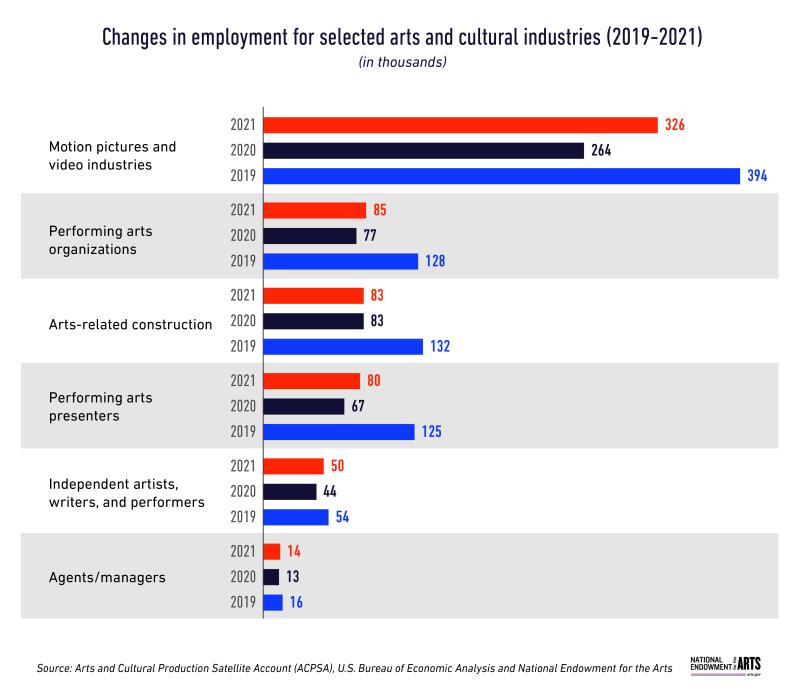
Highlights from the National Report—Imports and Exports
The ACPSA also offers insights into the imports and exports of arts and cultural goods and services. The arts and cultural trade surplus shrank in 2021—$17.8 billion, compared with $28.5 billion in 2020 and $31.5 billion in 2019. The 2020-2021 difference was due partly to a greater import value for arts and cultural goods and services than in prior years.
Top imports in 2021 included jewelry and silverware ($20.6 billion), other manufactured goods such as glass and china ($11.4 billion), and audio/visual production services for TV and movies ($9.7 billion). In 2021, lead arts export commodities included creative advertising ($19.3 billion in exports), information services such as audio/visual production for TV and movies ($14.4 billion), and arts‐related software publishing ($9.9 billion).
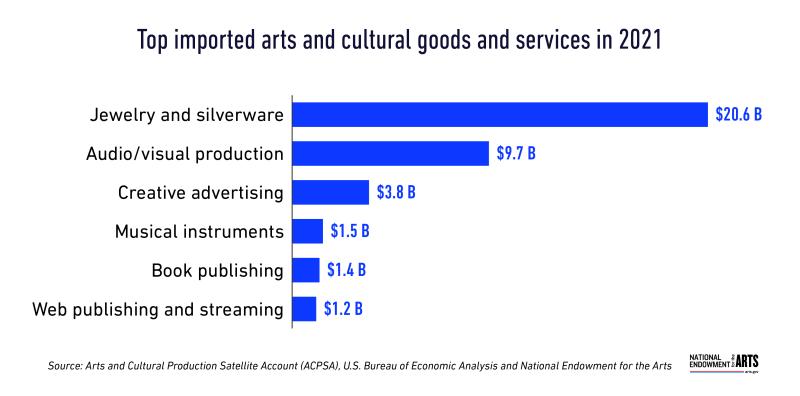
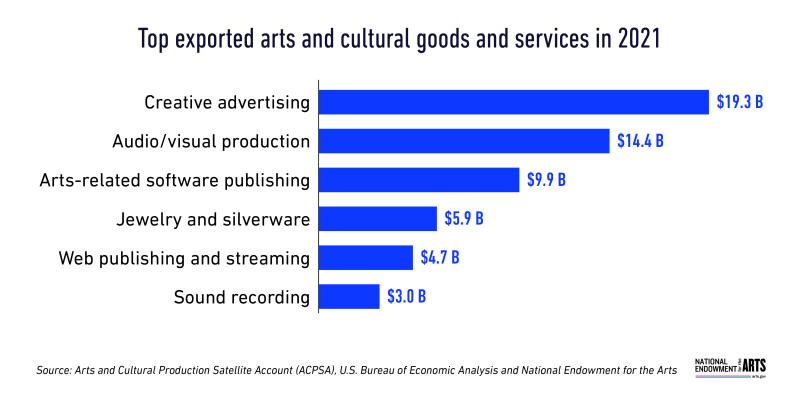
Highlights from the State-Level Report
Although 49 states have seen increases in arts and cultural employment from 2020 to 2021, no state has reached its 2019 level.
The ACPSA state-level dataset shows that between 2020 and 2021, every state and the District of Columbia saw growth in value added to their economies from arts and cultural industries, with 31 states and DC showing at least a 10 percent increase in the arts as a share of gross state product (GSP). In the case of 47 states and D.C., the economic value from arts and culture surpassed 2019 levels.
About the National Endowment for the Arts
Established by Congress in 1965, the National Endowment for the Arts is the independent federal agency whose funding and support gives Americans the opportunity to participate in the arts, exercise their imaginations, and develop their creative capacities. Through partnerships with state arts agencies, local leaders, other federal agencies, and the philanthropic sector, the Arts Endowment supports arts learning, affirms and celebrates America’s rich and diverse cultural heritage, and extends its work to promote equal access to the arts in every community across America. Visit arts.gov to learn more.
Contact
Liz Auclair, auclaire@arts.gov, 202-682-5744




